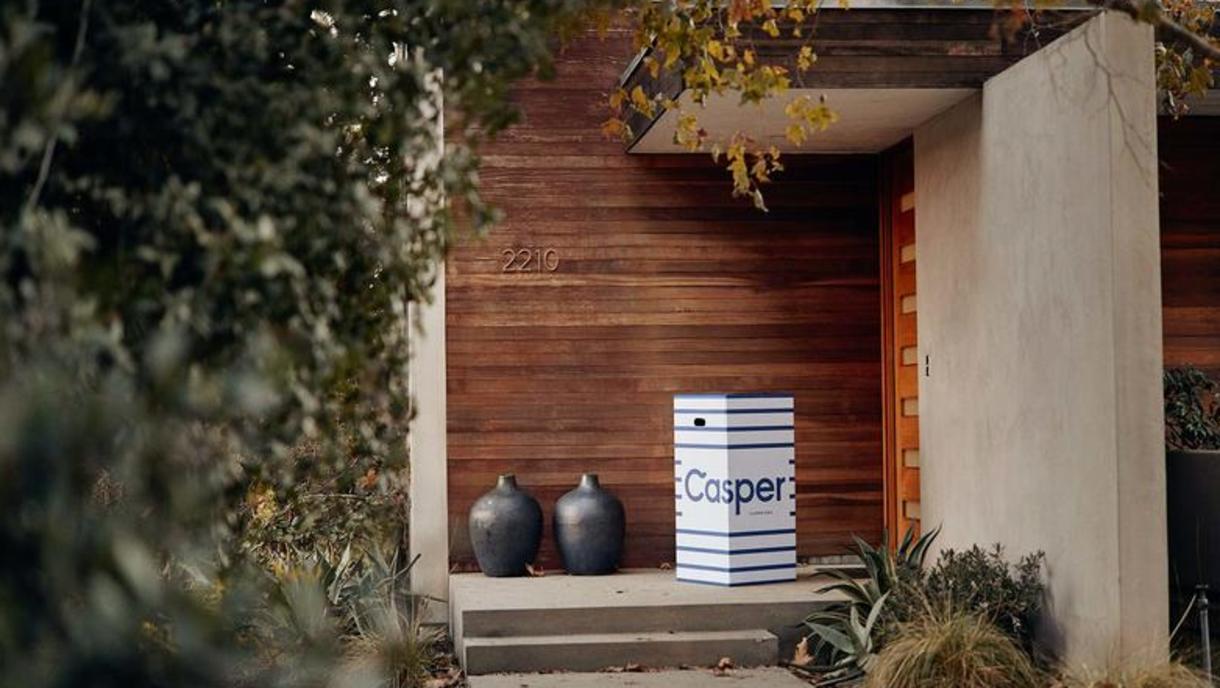The disruptor has made peace with the disrupted.
Earlier this week, direct-to-consumer bedding resource Casper announced that it will begin selling its internet-darling mattresses at big-box chain Mattress Warehouse, acknowledging once and for all that if you can’t beat ’em, you’d better join them.
The deal, which begins this month, puts Casper mattresses and bedding accessories into 60 of Mattress Warehouse’s 250 locations, as well as the retailer’s e-commerce site (which is, we kid you not, sleephappens.com). Although Mattress Warehouse is one of the largest bedding chains in the country, it’s tiny compared to the largest, Mattress Firm, which boasts more than 2,500 stores. And while getting a high-profile brand like Casper could be considered a coup for Mattress Warehouse, the deal is in no way an exclusive one—Casper already sells its products with 27 different retailers, including Target, Bed Bath & Beyond, Nordstrom and Sam’s Club.
Casper launched in 2014 as a direct-to-consumer brand, but the company quickly prioritized expanding into physical locations. In 2016, it began selling its products through West Elm’s stores and website. Just a year later, the company moved the program to Target, which offered the potential for significantly more business. By 2018, Casper opened its own store in New York, and has since opened more than 65 locations. (At one time, company leadership talked about having 200 doors.)
While the bulk of Casper’s sales (just shy of $500 million worldwide last year) still come from its direct business, wholesale distribution through third-party retailers now accounts for about one-quarter of its total revenue, or more than $125 million. Casper went public at the start of 2020, just before the pandemic, and its filings indicate that the company has failed to make an annual profit for the past four years. Its stock, which opened at around $11 a share after trading started 18 months ago, is just under $8 this week.
The irony in all of this—including the new Mattress Warehouse deal—is that Casper came into the market as the anti-retailer: the brand that was going to turn the mattress business upside down and give shoppers an appealing alternative to all of the industry’s old-school sleep shops, department stores and furniture stores. These are now the very same retailers now selling Casper products.
Casper is by no means alone in making deals with the retailers it was supposed to put out of business. A competitor, Purple, has been selling through Mattress Firm since 2017; Serta Simmons, a legacy mattress giant, flipped the equation and bought D2C brand Tuft & Needle in 2018.
What all of these startups have discovered is that the cost of acquiring a customer online is exorbitant as a percentage of the purchase price—some estimates put that cost at 15 percent. Even worse, once you get this customer, chances are you aren’t selling them another mattress for a decade. Casper and its cohort of competitors tried to remedy that by offering additional products, including pillows, sheets and even bedside lamps. Still, the math hasn’t quite worked.
The mattress disruptors, it should be noted, are not that much different from other startups in fields like shaving, oral hygiene and apparel, many of which have also moved to hybrid strategies that include at least some distribution through conventional retailers. Very few direct-to-consumer companies have tried to go it completely alone—and even those that have, like Warby Parker, have opened their own stores. And for Warby Parker, those stores now represent the majority of its overall sales.
You really can’t blame Casper for this deal, or any of the 27 other “partnerships,” as they call them. It’s what the company needs to grow and eventually become profitable. But arrangements like this make it clear: What was promised to be massive disruption is looking more and more like a momentary bother.
____________
Warren Shoulberg is the former editor in chief for several leading B2B publications. He has been a guest lecturer at the Columbia University Graduate School of Business; received honors from the International Furnishings and Design Association and the Fashion Institute of Technology; and been cited by The Wall Street Journal, The New York Times, The Washington Post, CNN and other media as a leading industry expert. His Retail Watch columns offer deep industry insights on major markets and product categories.





























